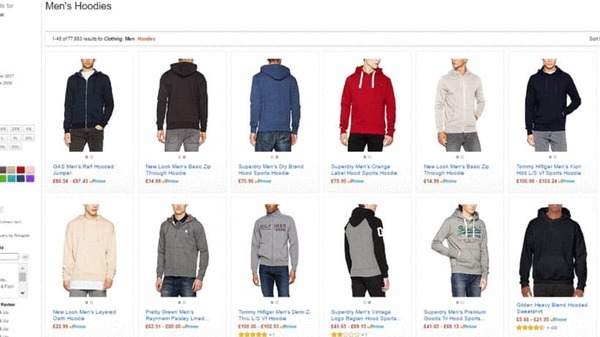Amazon, unsuprisingly is rapidly positioning itself to be a leader in fashion retail. The company first started integrations into the fashion industry in the early 2000s, and has since that time grown to be a formidable thorn in the side for many small businesses, ecommerce managers, and fashion retailers. And while some may voice their objections to the online behemoth stating that “Amazon has put more small businesses out of business than any other company.” (Quora), it does not appear that there will be any restrictions imposed upon the website. Therefore, ecommerce managers and fashion retailers should take a look at Amazon’s Fashion Ambitions and adjust their marketing strategies to remain competitive in today’s market. Here are just a few ways in which Amazon is reconstructing the fashion retail.
Logistics is becoming the name of the game
Per a report from Forbes, Amazon is using logistics as a key strategy to slingshot their business to the forefront of fashion retail. Today's consumer lives in an instantaneous world and so therefore want their fashion purchases delivered instantly or more realistically, as quickly as technologically or humanly possible. Intelligent Ecommerce Managers and Fashion retailers should certainly allow and provide consumers with various delivery options as part of their online service offering. Consumers expect to know that they can have their products delivered quickly, while having the ability to track their product enroute. Winners in this space are able to leverage new technologies to increase delivery time frame to meet customer expectations.
Small businesses can win through great customer service
Small businesses seem to be the most affected by Amazon’s clear ambitions to dominate the fashion retail market. As samaller businesses consistently engage consumers, it is critical that the customers have a memorable user experience. Online sites do not need to neglect the UX. Integration of chat, forums, blogs, audio and visual content can help fashion retailers maximise consumer loyalty and increase their customer base. At the end of the day “If you don’t deliver service and expertise, then your customers are going to buy from the low bidder.” (from an interview on Forbes with David Moore, owner of PawStop.com).
You will need to be the lowest bidder or close to it
There are a few customers who will always go with the company which provides the best services and the best experience. And while this is idealistic, it is not the norm. In most cases, individuals will go with the company which offers the product for the lowest, most competitive price. Fashion retailers and ecommerce managers need to have an understanding of the competitive pricing through the use of price tracking and competitive price monitoring platforms. Being wiser by using automatch strategies offer a degree of Pricing and Pricing optimization that is often associated with forwadr thinking retailers. Yet, businesses should really focus on automating Competitor Monitor activity to obtain quicker results and higher efficiency in product pricing. You do not have to be the lowest price on the market, but do keep in mind that shoppers are looking for a deal. And as the product may be identical to that which is on Amazon, you will need to have your prices in a margin which would make the customer prefer your site over theirs.
Get ready for a selective market
While Amazon has poised itself to dominate the fashion industry, especially where it comes to competing with other online businesses, they may be setting the stage for a very selective market for certain fashion retailers. Designers who wish not to have their products dominated by Amazon may opt not to have their products distributed through the site. As such, small businesses and fashion marketers might be able to gain the upper edge on certain products. Again, you will need to have a price tracker, and competitive analysis in place to understand where to target your marketing strategies.
Because Amazon is likely to take over ecommerce fashion, it can be predicted that retailers will need to make a decision on whether they wish to partner with the site or compete with the site. Should too many sites partner with Amazon, it is quite predictable that the fees will increase and the average retails profits will decrease. Understand that Amazon is using automated competitive monitoring software to set their price margins on their fashion selections. You should also automate your Competitive marketing activity to receive tailored reports and recommendations daily.
Conclusion
Amazon’s presence within the ecommerce fashion sector is increasing. Ecommerce managers and fashion retailers should focus their attentions on building loyalty through customer empowerment, increasing their SEO, and offering competitive prices based on Competitor Price Monitoring, Price Comparison Websites, and their own analytics.
Fashion retailers should not strive to compete with Amazon, but should focus their attentions on creating client lists, loyalty, and delivering competitively priced products to an ever-demanding market.

(30).jpg)